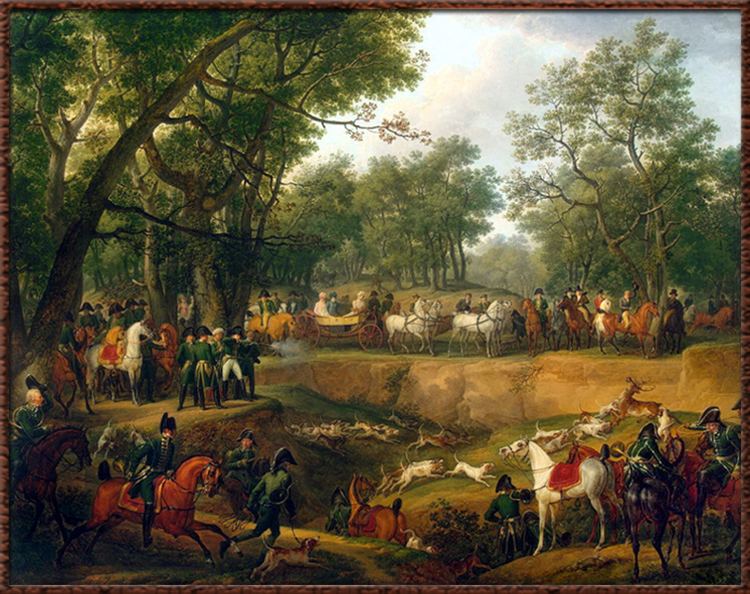Country Area 41,714 | Region Picardy | |
 | ||
Points of interest Chateau de Compiegne, Musee Antoine Vivenel, Aisne | ||
University University of Technology of Compiegne | ||
France compiegne
Compiègne ([kɔ̃pjɛɲ]) is a commune in the Oise department in northern France. It is located on the Oise River. Its inhabitants are called Compiégnois.
Contents
- France compiegne
- Map of Compigne
- Compiegne cite imperiale
- Administration
- History
- Population
- Museums
- Compigne Forest
- The University of Technology of Compigne
- Transport
- Cycling
- Personalities
- Twin towns Sister cities
- References
Map of Compiègne
Compiegne cite imperiale
Administration
Compiègne is the seat of three cantons
History
665 - Saint Wilfrid was consecrated Bishop of York. Wilfrid refused to be consecrated in Northumbria at the hands of Anglo-Saxon bishops. Deusdedit, Archbishop of Canterbury, had died, and as there were no other bishops in Britain whom Wilfrid considered to have been validly consecrated, he travelled to Compiègne, to be consecrated by Agilbert, the Bishop of Paris.833 - Louis the Pious (also known as King Louis I, the Debonair) was deposed in Compiègne.February 888 - Odo, Count of Paris and king of the Franks was crowned in Compiègne.23 May 1430 - During the Hundred Years' War, Joan of Arc was captured by the Burgundians while attempting to free Compiègne. They then sold her to the English.1624 - Compiègne gave its name to the Treaty of Compiègne, a treaty of alliance concluded by Cardinal Richelieu with the Dutch.1630 - Marie de' Medici's attempts to displace Richelieu ultimately led to her exile to Compiègne, from where she escaped to Brussels in 1631.17 July 1794 - The Martyrs of Compiègne are executed in Paris during the Reign of Terror.1900 - The golf events for the 1900 Summer Olympics took place.11 November 1918 - The Armistice with Germany (Compiègne), agreed at Le Francport near Compiègne, ends fighting of World War I22 June 1940 - Another Armistice with France (Second Compiègne) was signed between Nazi Germany and the defeated France in Le Francport, near Compiègne, in the same place as in 1918, in the same railroad carriage, but with the seats swapped.1941 - During the Nazi occupation of France, the Compiègne internment camp was established in Compiègne. A memorial of the camp, and another along the railway tracks, commemorate the tragedy.1968 - The starting location of the Paris–Roubaix bicycle race was changed from Paris to Compiègne.1972 - Creation of the University of Technology of Compiègne2004 - The Communauté de Communes de la Région de Compiègne becomes a partner in a European Union INTERREG IIIb project called SAND (see link below)Population
Museums
Compiègne Forest
The Glade of the Armistice in the Compiègne Forest was the site of the signing of two armistices; the 1918 Armistice with Germany and the 1940 Armistice with France. Hitler specifically chose the location, and had the original signing carriage moved from Paris to Compiègne, as an irony for the defeated French. The site still houses several memorials to the 1918 armistice, including a copy of the original railway carriage. The original, after use in the 1940 armistice was moved to Berlin as a trophy of Nazi triumph. The railway carriage was later taken to Crawinkel in Thuringia in 1945, where it was destroyed by SS troops and the remains buried. A replica now stands at the original site.
The University of Technology of Compiègne
Compiègne is home to the famous University of Technology of Compiègne (UTC), one of the top ranking engineering school in France, founded as a Technology University in 1972 to provide an alternative to the traditional "grandes écoles" for students interested in technologies and applied science.
Transport
The Gare de Compiègne railway station offers connections with Paris, Amiens, Cambrai and several regional destinations. The nearest motorway is the A1 Paris-Lille.
Cycling
Since 1968 Compiègne is the traditional start city of the famous Paris–Roubaix bicycle race. It was also the finish city of 3rd stage in the 2007 Tour de France.
Personalities
Compiègne was the birthplace of:
Twin towns – Sister cities
Compiègne is twinned with:

Compiègne is also partnered with:
